1941 Plymouth P12 Two-door Sedan, Recently restored, 201 CID flathead, 3-spd Man
1941 Plymouth Other P12 Two-door Sedan for sale in Saint Louis, Missouri, United States
| Item location: | Saint Louis, Missouri, United States |
| Make: | Plymouth |
| Model: | Other |
| SubModel: | P12 Two-door Sedan |
| Type: | Sedan |
| Trim: | P12 Two-door Sedan |
| Year: | 1941 |
| Mileage: | 60,589 |
| VIN: | 15021647 |
| Color: | Charlotte Ivory |
| Engine size: | 201 CID flathead inline six-cylinder engine |
| Number of cylinders: | 6 |
| Transmission: | Manual |
| Drive type: | RWD |
| Vehicle Title: | Clear |
| Want to buy? | Contact seller! |
Description for Plymouth Other 1941
1941 Plymouth P12 Two-door Sedan Description1941 Plymouth P12 Two-door Sedan
Recently restored with nice trim and chrome Art Deco styling New Charlotte Ivory exterior and restored dark green interior Original 201 CID flathead inline six-cylinder engine Three-speed manual transmission Factory center high-mounted stop light (CHMSL) in rear Battery moved from under driver’s seat to engine bayIn the days before Pearl Harbor, Plymouth rode high, placing third in the annual sales race behind Ford and Chevrolet. Here at MotoeXotica Classic Cars, we have one of those 1941 Plymouths, a P12 Coupe and an echo of the Big Band Era.
Advertised as the “One For ’41,” Plymouth marketed three distinct series for the first time since 1935. At the bottom of the totem pole was the P11 Plymouth, followed by the upgraded P11D, which now took the name of Deluxe, since the Roadking name had been discontinued. At the top of the line was the P12 Special Deluxe. Special Deluxe came in two- or four-door sedans, business coupes, auxiliary seat coupes, convertible coupes with full rear seats (but the passengers had better have been friendly!), station wagons and two long-wheelbase sedans, in seven-passenger and limousine form.
Dressed in Charlotte Ivory, the paint is in great shape, even and the clean color stands out even among other classic cars. Amazingly, this car has a factory center high-mounted stop light in the back, 45 years before all US vehicles had to have them. The Plymouth’s tinted glass panels are crack-free and clear and the vehicle’s lights are in similar good order. Car rides on Coker Classic whitewall tires, size 6.70-15. All of the body panels are straight, including the black running boards, and the shiny bumpers complete the exterior. The engine bay is tidy, the battery looks new and the trunk is clean.
The 1941 Plymouths wore an adroit facelift featuring a simple, almost heart-shaped grille and modest bright-metal side accents. Six cheap standard-trim models were added, Roadking became DeLuxe and the old DeLuxe was now Special DeLuxe.
Nineteen forty-one would mark the last year for the 201-cubic-inch flathead inline six-cylinder engine. A front opening, alligator-type hood replaced the butterfly type of years past, and at long last the battery was moved underneath the hood from its position under the driver’s seat. A counter-balanced deck lid was a much-appreciated change for the better. While no speedway threat, the Plymouth six still provided reliable cruising at over 65 mph, and was well-known for economy. A notable manufacturing advance was Chrysler “Superfinish,” a special process of giving certain internal engine parts a mirror-smooth surface for reduced friction and decreased wear.
Inside, the car’s dark green interior is an eye-catching contrast to the ivory outside. The bench seats are in excellent shape, with the matching carpet, headliner, dashboard, three-spoke steering wheel and door skins all in similar condition. The mirrors and shift lever are in good order and the car has the radio delete option.
The slow-selling limousine was axed after just 24 were built. Other ’41 rarities were the DeLuxe club coupe (204) and the standard club coupe (994), utility sedan (468) and Suburban (217). All models boasted another Chrysler engineering first: the Safety-Rim wheel, with a beaded circumference to prevent tire loss in a blowout. The battery moved under the hood for the first time and Plymouth offered “PowerMatic” shift, a vacuum-transmission assist but not a fully automatic transmission like General Motors offered in its Oldsmobiles.
To the casual observer, the ’41 was a mildly restyled ’40—“with a chrome-plated bib” or “heart.” Underneath, there was also little mechanical difference except for a re-geared transmission. The only major change was adoption of safety rim wheels, designed to hold the tire on the rim in case of flat or blowout. Without proper tools, the tires were miserable to get off the rim (a special tire tool was shipped with each car), but it was a major safety upgrade that it would take some in the industry decades to catch up to. Buyers could also get 18-inch high-clearance wheels (two inches less diameter than previous years). Front and rear fenders again had the speed line differing in the addition of three smaller speed lines embossed at the trailing edge of the fender. Nineteen forty-one marked the first use of stainless-steel fender beading between fenders and body. Like 1940, the running boards remained a “delete” option.
Predating Federal law by 46 years, Plymouth pioneered a center high-mounted stop light (CHMSL) in its own housing on the deck lid—unlike in 1986, there were no stop-lamp bulbs in the regular tail lamps. The four-millionth Plymouth, a Special Deluxe convertible, was built at the Los Angeles plant during the year. Sales surpassed the half-million mark again, to 522,080 units—shy some 75,000 units of overtaking Ford for second place.
Competition to this Plymouth in 1941 included Chevrolet’s Fleetline two-door and Ford’s Tudor sedans.
This car is currently located at our facility in St. Louis, Missouri. Current mileage on the odometer shows 60,589 miles. It is sold as is, where is, on a clean and clear, mileage exempt title. GET OUT AND DRIVE!!!
VIN: 15021647
Note: Please see full terms and conditions listed below that pertain to the purchase of any said vehicle, thank you.

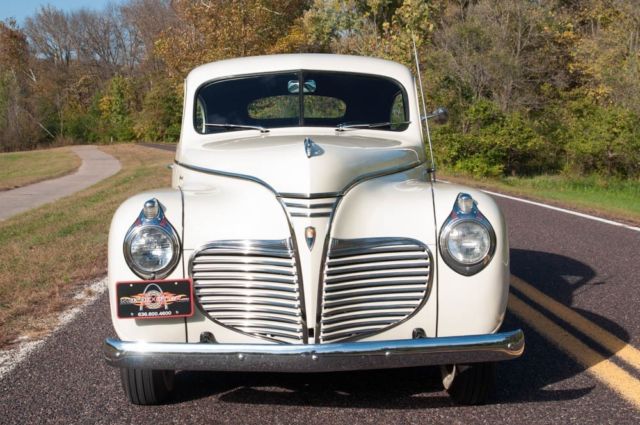
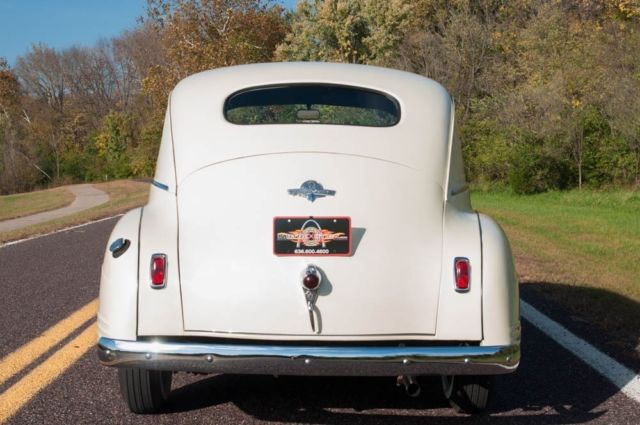
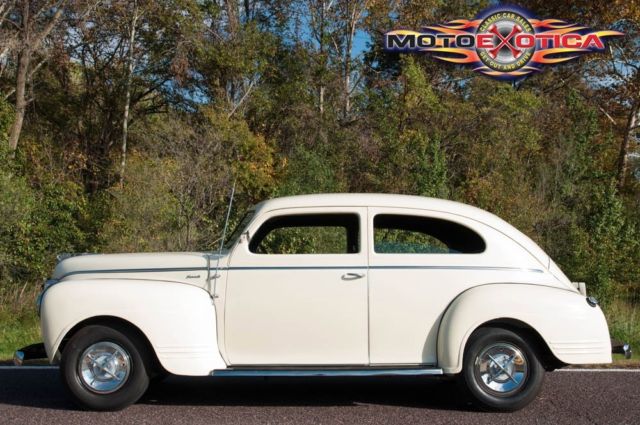

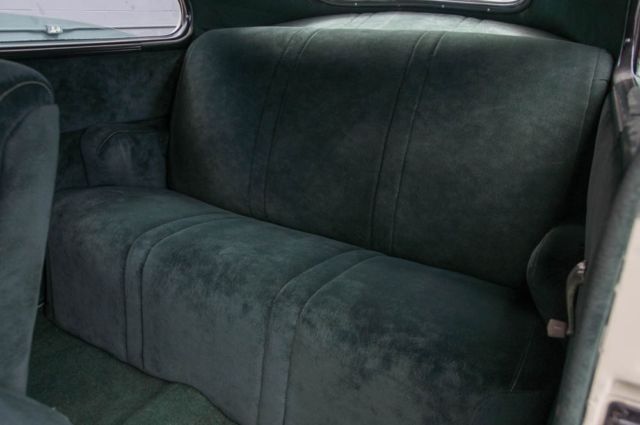
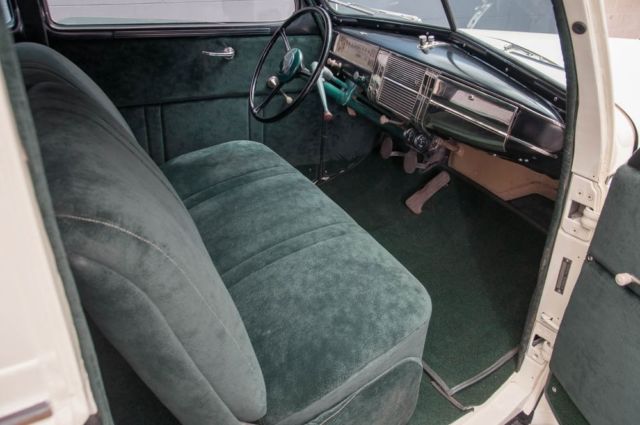

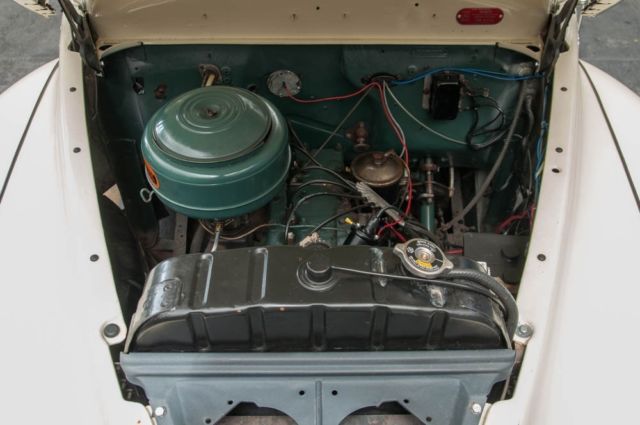

 1941 Plymouth 2 Door Sedan
1941 Plymouth 2 Door Sedan
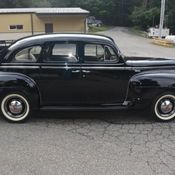 1941 Plymouth Special Deluxe 4-Door Sedan - Collector Car
1941 Plymouth Special Deluxe 4-Door Sedan - Collector Car
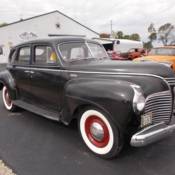 1941 PLYMOUTH 4 Door SEDAN, ORIGINAL PAINT & INT & 6 CY, 3-Sp MUST SEE AMAZING
1941 PLYMOUTH 4 Door SEDAN, ORIGINAL PAINT & INT & 6 CY, 3-Sp MUST SEE AMAZING
 1941 Plymouth Convertible Special Deluxe with Flathead engine
1941 Plymouth Convertible Special Deluxe with Flathead engine
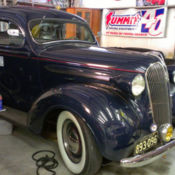 1937 Plymouth, P3, 2 door sedan, Restored
1937 Plymouth, P3, 2 door sedan, Restored
 1940 Plymouth Deluxe Four-door Touring Sedan Rotisserie Restored
1940 Plymouth Deluxe Four-door Touring Sedan Rotisserie Restored
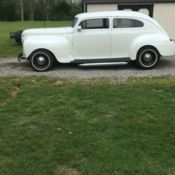 1941 Plymouth Sedan Project
1941 Plymouth Sedan Project
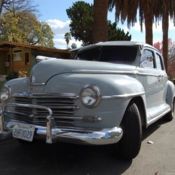 1948 Plymouth Special Deluxe 4 door Sedan, Original parts, fully restored. 13K m
1948 Plymouth Special Deluxe 4 door Sedan, Original parts, fully restored. 13K m